
This trip was run be Explore

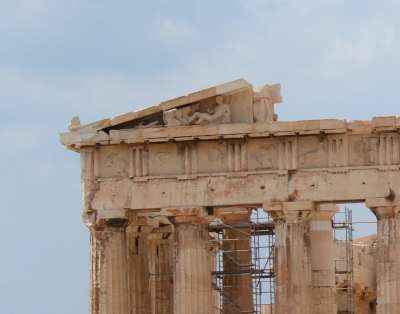
Day 1. Arrive at Athens
Day 2. In Athens Athens has been the capital of Greece for less than 200 years, but it has grown rapidly in size. In the morning there was an orientation walking tour (where the guide got lost) which took us past the Parliament buildings, through Syntagma Square and into the Plaka - the old town. You notice the contrast between the modern capital and the old city the well-heeled inhabitants of Kolonaki on the one hand, and the vibrant Plaka quarter on the other. In the afternoon we visited the Acropolis and its museum. Here are the majestic ruins of the Athens of Pericles the Propylaea (or marble entrance hall), the Parthenon (built by Ictinos 2500 years ago), the Temple of Athena Nike (the Wingless Victory), and the monument most venerated by the ancient Athenians themselves the Erechtheion. Tradition relates that gods Athena and Poseidon quarrelled here. The sea-god struck the rock with his trident, causing salt water to gush out, while Athena struck it with her spear and brought forth an olive tree. As olives were deemed to be more useful, the other gods let her take the city under her protection.

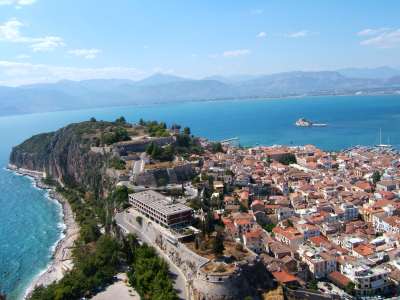 Day 3. In Nafplion
Nafplion was the
first capital of modern Greece and one of the most beautiful coastal
towns in the Peloponnese. We climbed up to the Palamidi
Fortress for great views. The Palamidi is actually comprised of three
seperate fortresses walled together, it was built in 1714 by the
Venetians, taken by the Turks the following year, and held until they
surrendered it to Kolokotronis after a 15 monthe seige during the War
of Independence.
Day 3. In Nafplion
Nafplion was the
first capital of modern Greece and one of the most beautiful coastal
towns in the Peloponnese. We climbed up to the Palamidi
Fortress for great views. The Palamidi is actually comprised of three
seperate fortresses walled together, it was built in 1714 by the
Venetians, taken by the Turks the following year, and held until they
surrendered it to Kolokotronis after a 15 monthe seige during the War
of Independence.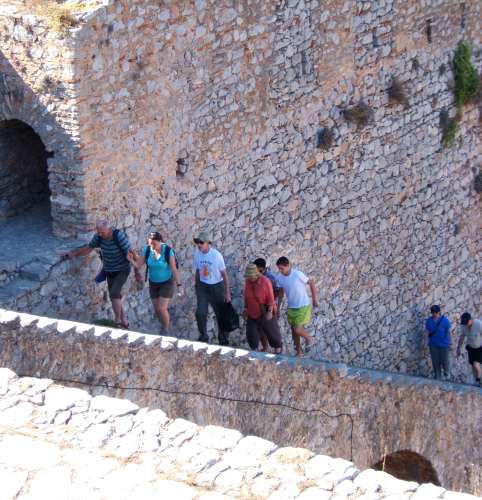
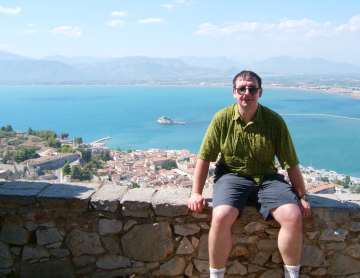
 Day 4. Exploring Epidavros
We travel south east of Nafplion to Epidavros. Dedicated
to Asclepius, the healing god and legendary son of Apollo, the
sanctuary here was one of the most important of the ancient world, and
it remained a site of pilgrimage from the sith century BC to Roman
times. Epidavros is home to one of the greatest and best preserved of
all ancient Greek theatres. With its backdrop of rolling hills, this
14,000-seat arena merges perfectly into the landscape, so much so that
it was rediscovered and unearthed only in the last century. The
acoustics of the amphitheatre are so incredible, it's said that even
those sat on the highest tier will hear a coin drop on stage!
Day 4. Exploring Epidavros
We travel south east of Nafplion to Epidavros. Dedicated
to Asclepius, the healing god and legendary son of Apollo, the
sanctuary here was one of the most important of the ancient world, and
it remained a site of pilgrimage from the sith century BC to Roman
times. Epidavros is home to one of the greatest and best preserved of
all ancient Greek theatres. With its backdrop of rolling hills, this
14,000-seat arena merges perfectly into the landscape, so much so that
it was rediscovered and unearthed only in the last century. The
acoustics of the amphitheatre are so incredible, it's said that even
those sat on the highest tier will hear a coin drop on stage!
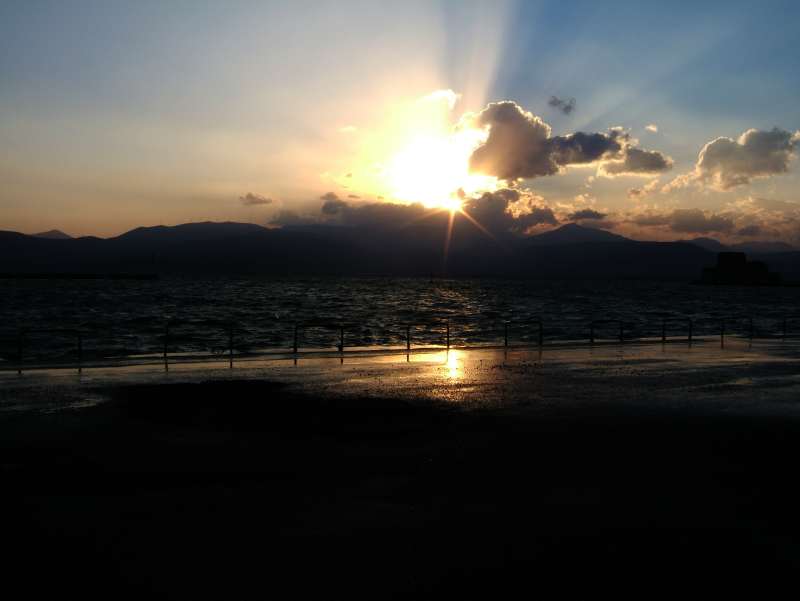
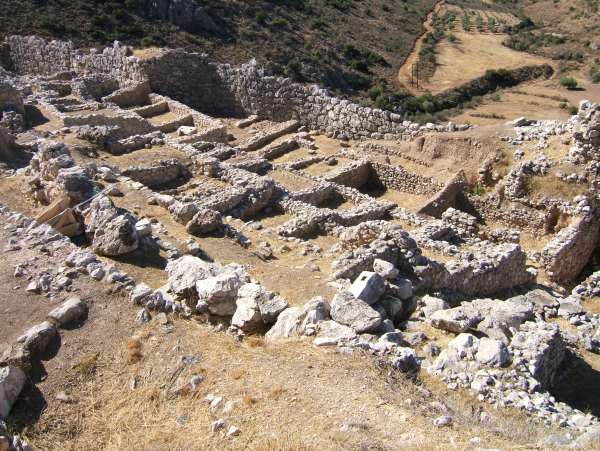 Day 5. To Areopolis, via Mycenae
Leaving Nafplion we travelled south towards the heart of the
Mani Peninsula, pausing en route to visit the mighty ruins of ancient
Mycenae. Perched on a hilltop overlooking the modern city, Mycenae is
connected to the legend of King Agamemnon who commanded the 10-year
long expedition against Troy. The site was unearthed by the
archaeologist Schliemann in the 1970's and is prized for its Lion Gate
and Royal Tombs. Equally impressive are the "beehive tombs" which
include the Treasury of Atreus: the lintel over the monumental Atreus
door weighs over 120 tons! Inside, the structure is awesome: the
principal chamber dates from about 1350 BC and emulates the grandeur
of the Egyptian pharaohs. Homer's epithets of "well-built Mycenae,
rich in gold" are well born out in the superbly crafted gold and
architecture of the tombs found here which can be seen at the
museum. In the afternoon, we moved on to the city of Areopolis.
Day 5. To Areopolis, via Mycenae
Leaving Nafplion we travelled south towards the heart of the
Mani Peninsula, pausing en route to visit the mighty ruins of ancient
Mycenae. Perched on a hilltop overlooking the modern city, Mycenae is
connected to the legend of King Agamemnon who commanded the 10-year
long expedition against Troy. The site was unearthed by the
archaeologist Schliemann in the 1970's and is prized for its Lion Gate
and Royal Tombs. Equally impressive are the "beehive tombs" which
include the Treasury of Atreus: the lintel over the monumental Atreus
door weighs over 120 tons! Inside, the structure is awesome: the
principal chamber dates from about 1350 BC and emulates the grandeur
of the Egyptian pharaohs. Homer's epithets of "well-built Mycenae,
rich in gold" are well born out in the superbly crafted gold and
architecture of the tombs found here which can be seen at the
museum. In the afternoon, we moved on to the city of Areopolis.
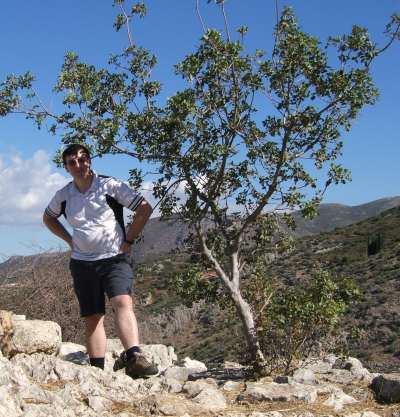
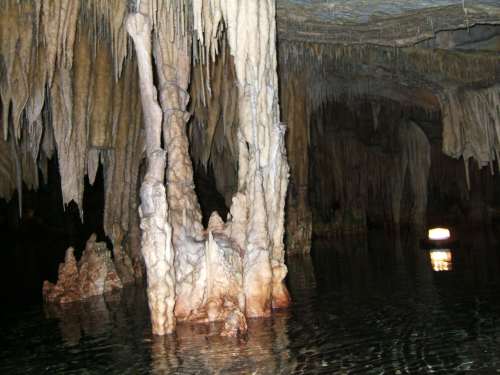 Day 6. In Areopolis Areopolis is the main town (really a large village) on the Mani
Peninsula. It lies some 2 miles from the sea, quite high up and well
located for walks. Due to the fires in the region the originally
planned walks were not possible however we did get a kind of
mystery walk in. Just to the south, a track leads to
the remarkable Diros Caves, first investigated in 1949, a pleasant
walk with marvellous views across Diros Bay (optional). Since the
initial exploration it has been established that this vast
subterranean complex was once the home of Neolithic man. A visit here
involves taking a boat through tunnels and caverns lined with
spectacular rock formations. In the afternoon we took a
walk through the rural village of Limeni outlying the city.
Day 6. In Areopolis Areopolis is the main town (really a large village) on the Mani
Peninsula. It lies some 2 miles from the sea, quite high up and well
located for walks. Due to the fires in the region the originally
planned walks were not possible however we did get a kind of
mystery walk in. Just to the south, a track leads to
the remarkable Diros Caves, first investigated in 1949, a pleasant
walk with marvellous views across Diros Bay (optional). Since the
initial exploration it has been established that this vast
subterranean complex was once the home of Neolithic man. A visit here
involves taking a boat through tunnels and caverns lined with
spectacular rock formations. In the afternoon we took a
walk through the rural village of Limeni outlying the city.
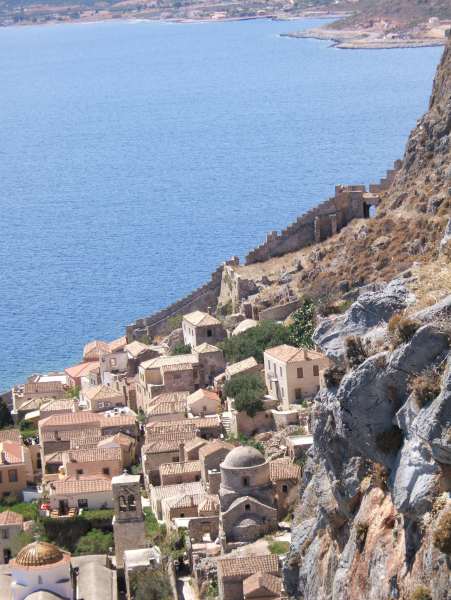 Day 7. In and around Areopolis
We took a trip to nearby town of Monemvasi - "Greece's
Gibraltar". This 13th century Byzantine fortress town occupies a
steep, rocky islet which is connected to the coast by a bridge, and it
was amongst the first of the Peloponnese fortified towns to be
liberated by the Greeks in 1821.
Day 7. In and around Areopolis
We took a trip to nearby town of Monemvasi - "Greece's
Gibraltar". This 13th century Byzantine fortress town occupies a
steep, rocky islet which is connected to the coast by a bridge, and it
was amongst the first of the Peloponnese fortified towns to be
liberated by the Greeks in 1821.
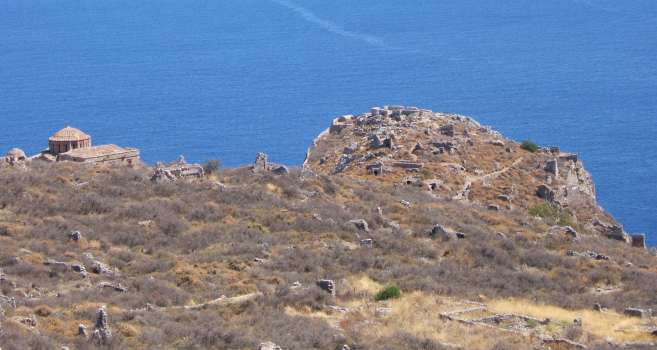
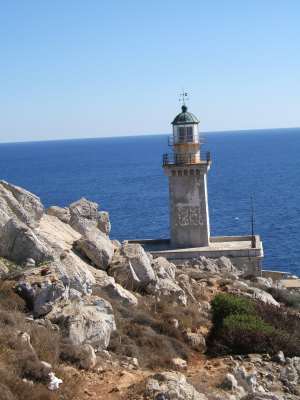
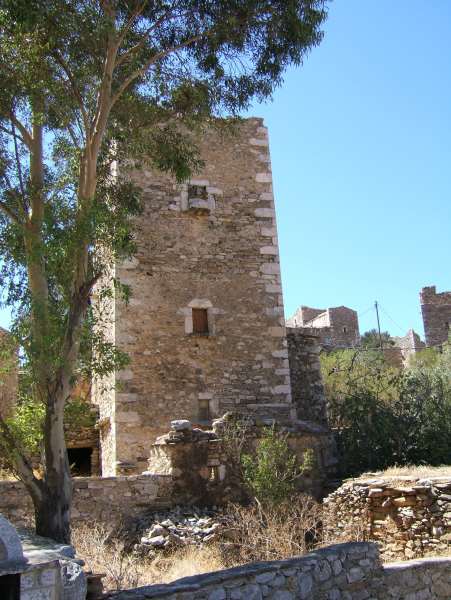
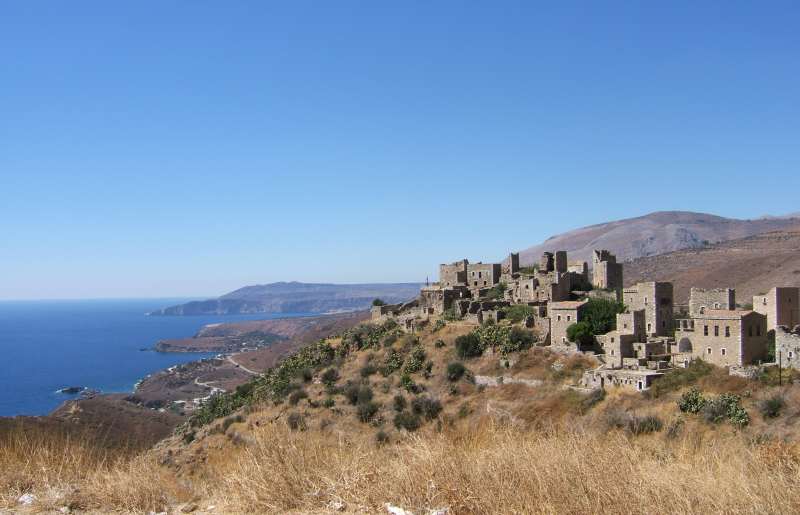 Day 8. In and around Areopolis
The Mani is a naturally isolated and traditionally independent area
and the people who inhabit its wild landscape have always resisted
change and clung to their ancient traditions. In addition to it's
interesting history of piracy, the feudal society which developed
around the 14th century has left a unique architectural legacy in the
form of many marble-roofed towerhouses, once used as a defence against
enemy clans and as a sign of family prestige. We charter a bus to
discover this fascinationg region, visiting Cape Tenaro; the
southern-most point of mainland Greece, Girolimenas and Vathia
fortified village.
Day 8. In and around Areopolis
The Mani is a naturally isolated and traditionally independent area
and the people who inhabit its wild landscape have always resisted
change and clung to their ancient traditions. In addition to it's
interesting history of piracy, the feudal society which developed
around the 14th century has left a unique architectural legacy in the
form of many marble-roofed towerhouses, once used as a defence against
enemy clans and as a sign of family prestige. We charter a bus to
discover this fascinationg region, visiting Cape Tenaro; the
southern-most point of mainland Greece, Girolimenas and Vathia
fortified village.
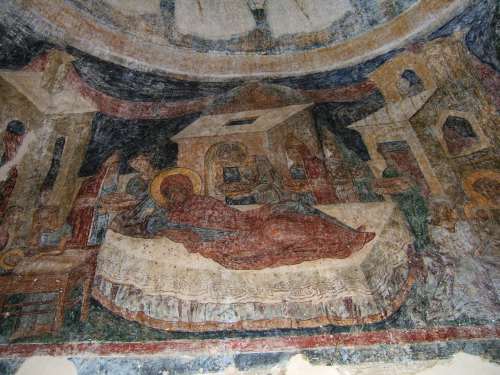
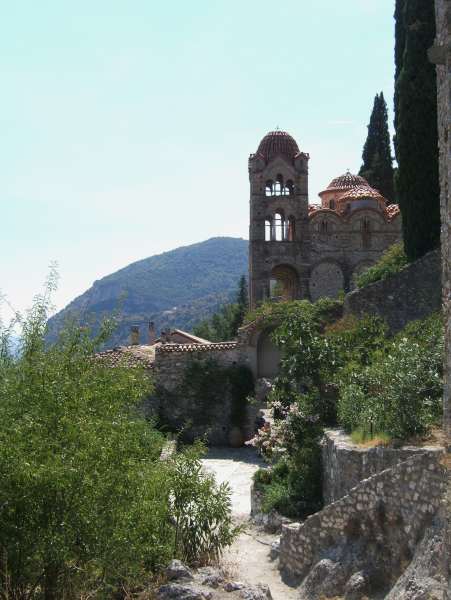 Day 9. Drive to Pylos via Mystras
Leaving the Mani, we head north to the abandoned medieval town of
Mystras. Clinging to a steep flank of the Taygetos range, some 150m
above the plain, Mystras is silent and ruined today but nevertheless
evocative of the people who once lived here and made it prosperous. We
wander the cobbled alleyways, exploring the various sun- bleached
palaces and houses along the way. Although only ruins remain, the
architectural styles and artistic excellence of many wall paintings,
mosaics and decorative sculptures are worthy of close inspection. In
the Upper Town is the vast arched hall of the Palace of the Despots,
with its two standing towers. The beautiful Pantanassa Church, still
used by a few smiling nuns, combines both Byzantine and Gothic
elements and has some rather fine frescoes. Crowning the summit is the
original Frankish Castle (Kastro) with its breathtaking overview of
the plain of Sparta. Walking through this phantom city with its
scattered ruins is like taking a journey back through time. Later we
continue to the harbour town of Pylos.
Day 9. Drive to Pylos via Mystras
Leaving the Mani, we head north to the abandoned medieval town of
Mystras. Clinging to a steep flank of the Taygetos range, some 150m
above the plain, Mystras is silent and ruined today but nevertheless
evocative of the people who once lived here and made it prosperous. We
wander the cobbled alleyways, exploring the various sun- bleached
palaces and houses along the way. Although only ruins remain, the
architectural styles and artistic excellence of many wall paintings,
mosaics and decorative sculptures are worthy of close inspection. In
the Upper Town is the vast arched hall of the Palace of the Despots,
with its two standing towers. The beautiful Pantanassa Church, still
used by a few smiling nuns, combines both Byzantine and Gothic
elements and has some rather fine frescoes. Crowning the summit is the
original Frankish Castle (Kastro) with its breathtaking overview of
the plain of Sparta. Walking through this phantom city with its
scattered ruins is like taking a journey back through time. Later we
continue to the harbour town of Pylos.
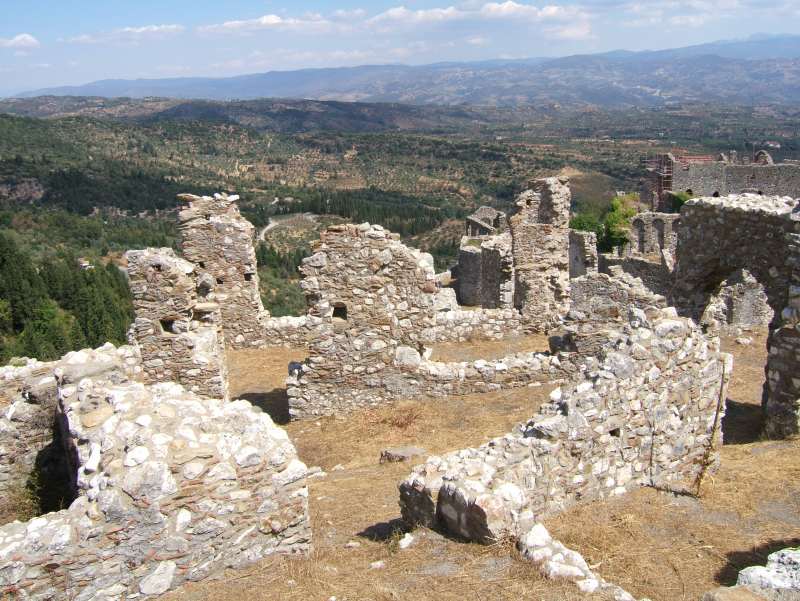
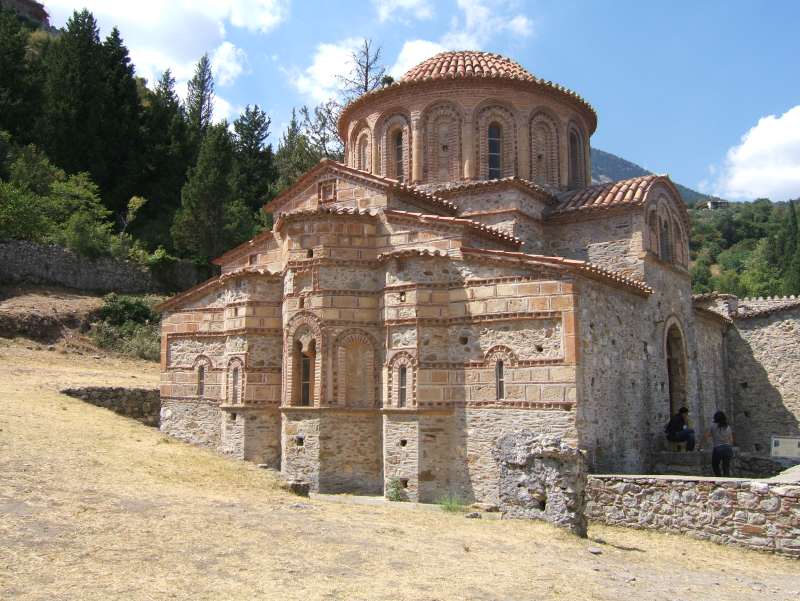

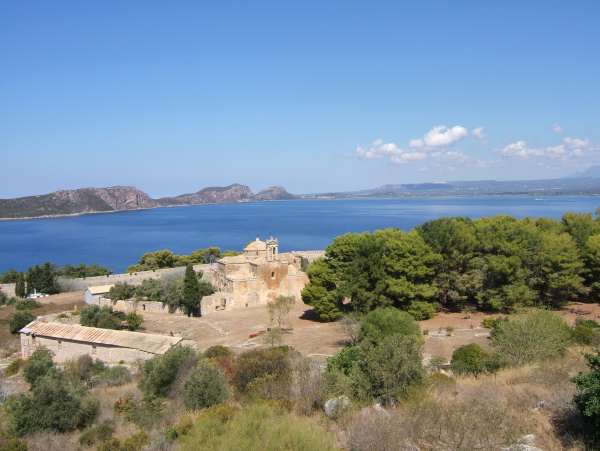 Day 10. In Pylos
We spend the day in this picturesque place set amid olive trees, rocky
meadows and off-shore islands. We took a boat trip around the coves and
islands of the Bay of Navarino and Sfaktiria island, which has some
fine underwater caves.
Day 10. In Pylos
We spend the day in this picturesque place set amid olive trees, rocky
meadows and off-shore islands. We took a boat trip around the coves and
islands of the Bay of Navarino and Sfaktiria island, which has some
fine underwater caves.
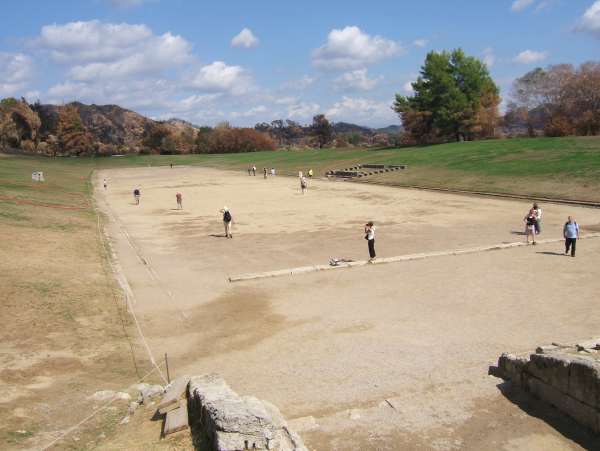
 Day 11. To Pylos and Ancient Olympia
Day 11. To Pylos and Ancient Olympia
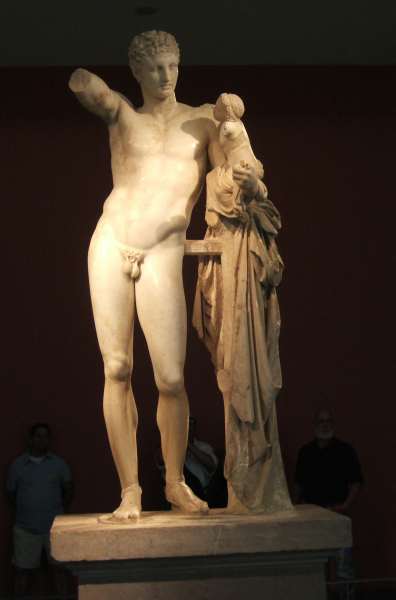 Driving north,we stop briefly at Nestor's Palace. Nestor, King of
Pylos was one of the strongest and richest leaders of the Greeks
during the Trojan War and built this once lavishly decorated palace in
around 1500 BC (optional). This afternoon we travel to the ruined
monuments of ancient Olympia, birthplace of the Olympic games and one
of Greece's most renowned historical sites. The site lies in an
enchanting valley setting close to the modern-day town of Nea
Olympia. The first monuments to be constructed were in the Altis, or
sacred grove, and date back to the 10th-9th century BC. Estimates
indicate the games first began in 776 BC, after the worship of Zeus
was established. Initially all the principal Greek cities took part in
the Olympiads (which were held every four years). As well as wandering
through the remains of the gymnasium, wrestling school, stadium and
the Temple of Zeus, you could visit the excellent Archaeological
Museum (optional) which has many remarkable exhibits on
view.
Driving north,we stop briefly at Nestor's Palace. Nestor, King of
Pylos was one of the strongest and richest leaders of the Greeks
during the Trojan War and built this once lavishly decorated palace in
around 1500 BC (optional). This afternoon we travel to the ruined
monuments of ancient Olympia, birthplace of the Olympic games and one
of Greece's most renowned historical sites. The site lies in an
enchanting valley setting close to the modern-day town of Nea
Olympia. The first monuments to be constructed were in the Altis, or
sacred grove, and date back to the 10th-9th century BC. Estimates
indicate the games first began in 776 BC, after the worship of Zeus
was established. Initially all the principal Greek cities took part in
the Olympiads (which were held every four years). As well as wandering
through the remains of the gymnasium, wrestling school, stadium and
the Temple of Zeus, you could visit the excellent Archaeological
Museum (optional) which has many remarkable exhibits on
view.
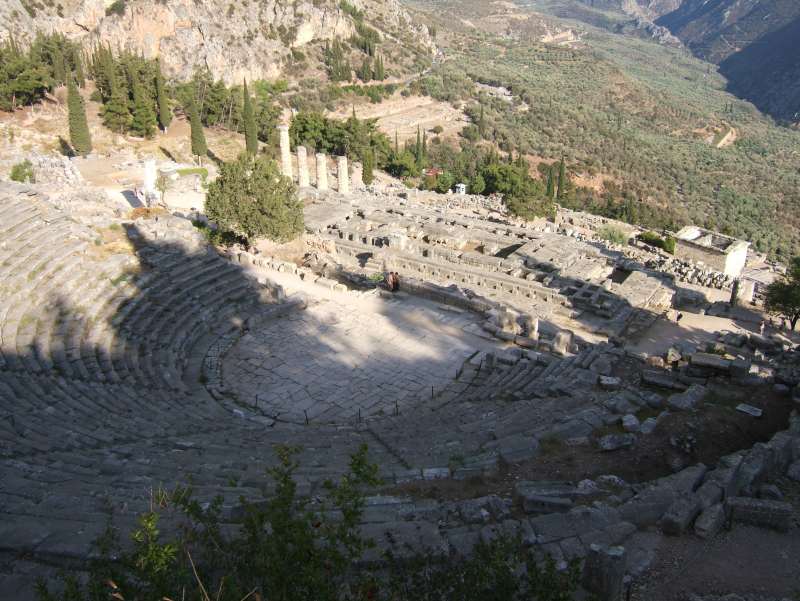
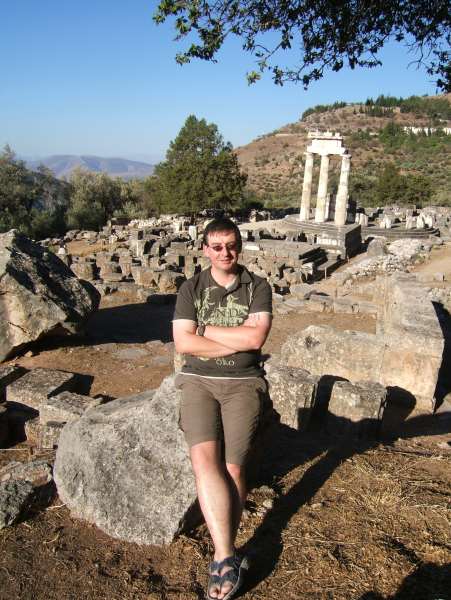 Day 12. To Delphi
From Olympia, we head north east pausing briefly in Patra, an
important Byzantine port town. A scenic drive takes us through the
largest olive grove in Greece to reach Delphi. Perched on the rocky
slopes of sacred Mt. Parnassos (2459m), Delphi was the perfect
setting for mystery and religious prophecy. Here the god Apollo spoke
through the medium of a priestess called the Pythia. After drinking
the waters of the nearby Castalian Spring, said to echo with the
prophetic voices of Apollo's muses, she swooned over intoxicating
fumes emitted from a crack in the ground and uttered strange
gabblings, which the priests then translated into verse and gave to
the faithful The answers were always so ambiguous that whatever
happened they were bound to come true. The site's famous antiquities,
including the Temple of Apollo, theatre, stadium and Marmaria
Sanctuary are wonderfully picturesque, and the museum
contains the much admired `charioteer'. A truly excellent place to
visit - we had a superb guide. Photos can't do it
justice. Highlight of the trip.
Day 12. To Delphi
From Olympia, we head north east pausing briefly in Patra, an
important Byzantine port town. A scenic drive takes us through the
largest olive grove in Greece to reach Delphi. Perched on the rocky
slopes of sacred Mt. Parnassos (2459m), Delphi was the perfect
setting for mystery and religious prophecy. Here the god Apollo spoke
through the medium of a priestess called the Pythia. After drinking
the waters of the nearby Castalian Spring, said to echo with the
prophetic voices of Apollo's muses, she swooned over intoxicating
fumes emitted from a crack in the ground and uttered strange
gabblings, which the priests then translated into verse and gave to
the faithful The answers were always so ambiguous that whatever
happened they were bound to come true. The site's famous antiquities,
including the Temple of Apollo, theatre, stadium and Marmaria
Sanctuary are wonderfully picturesque, and the museum
contains the much admired `charioteer'. A truly excellent place to
visit - we had a superb guide. Photos can't do it
justice. Highlight of the trip.
Day 13. Drive back to Athens.
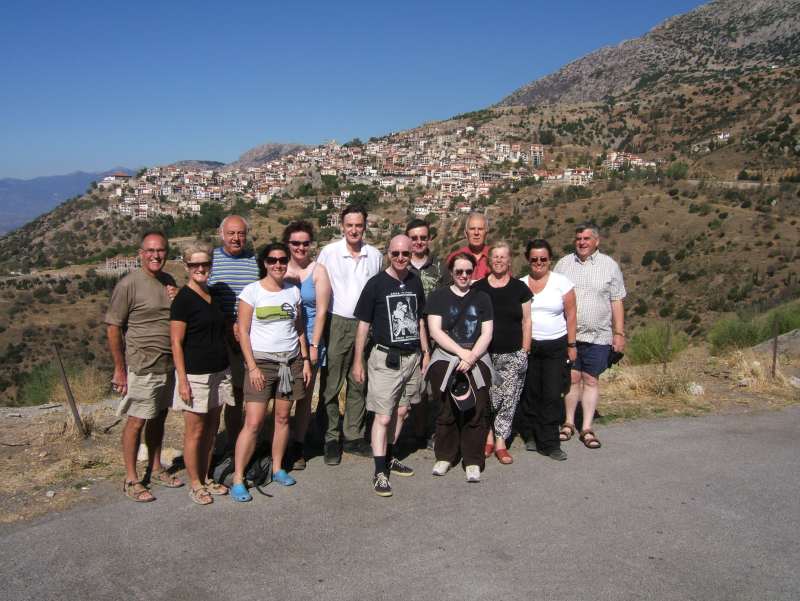
THE END
Last Updated: 9th December 2007
Copyright © 2007 Dr John A.R. Williams